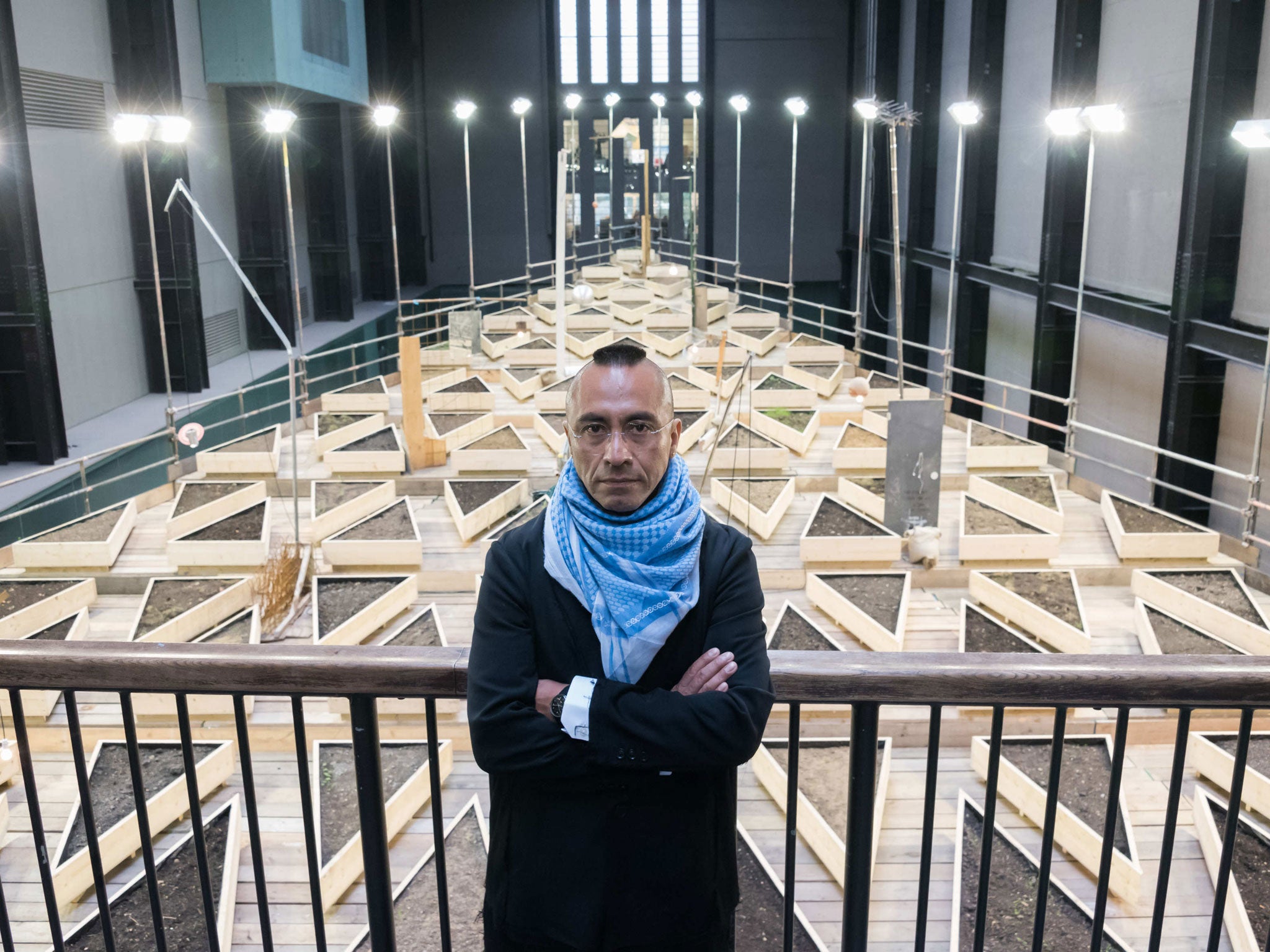Abraham Cruzvillegas, artist: 'I never thought I would have a studio as big as the Tate Modern Turbine Hall'
Karen Wright meets the Mexican artist at the site for Empty Lot, his soon-to-be completed installation

Your support helps us to tell the story
From reproductive rights to climate change to Big Tech, The Independent is on the ground when the story is developing. Whether it's investigating the financials of Elon Musk's pro-Trump PAC or producing our latest documentary, 'The A Word', which shines a light on the American women fighting for reproductive rights, we know how important it is to parse out the facts from the messaging.
At such a critical moment in US history, we need reporters on the ground. Your donation allows us to keep sending journalists to speak to both sides of the story.
The Independent is trusted by Americans across the entire political spectrum. And unlike many other quality news outlets, we choose not to lock Americans out of our reporting and analysis with paywalls. We believe quality journalism should be available to everyone, paid for by those who can afford it.
Your support makes all the difference.I meet Mexican artist Abraham Cruzvillegas at his current studio, the Turbine Hall in Tate Modern: the site for Empty Lot, his soon-to-be completed installation. He tells me he never thought he would have a studio as massive as this capacious hall. He has a small studio in Mexico City "where I go to read, listen to music, think, have meetings and to be alone."
Born in 1968, Cruzvillegas grew up in Ajusco in the south of Mexico City, in a community of houses constructed by their inhabitants. This has led him to his own practice he has labelled autoconstruccion, based, he tells me, on the metaphor of self-construction.
Cruzvillegas has been working with three teams on this large Tate project: the soil collectors, the scaffolders and the electricians. The triangular wooden planters – their shape, he admits, relate to Buckminster Fuller and their use in his geodesic domes – were made in a factory to his specifications. He made the lamps, finding the materials in London and putting them together at his small desk at the end of the Turbine Hall, then carefully placing them between the planters.
"For many years I described autoconstruccion as a scaffolding that I could disassemble and reassemble for different needs." This time it is different. He is using the actual materials of construction, "and when it is constructed I can work over it and under it and dismantle it and I can see through it – and suddenly it is not a metaphor, it is a real scaffolding."
Cruzvillegas has imported soil from London into the museum, carefully transporting this valueless material into planters "so it can become a portrait of here". In the past he has made works from "worthless" objects he has found in streets, turning them into valuable artworks. In this case he is hoping something will evolve that will change and involve the audience. "My idea is more about transformation: how we can be part of our universe that is constantly changing."
When it is over the scaffolding will return to its former use. Hopefully the change, regeneration, growth and evolution will happen before that. He admits that people have asked him what happens if nothing happens. "That is impossible. Nothing happens does not exist". "It is the most open and generous gesture that I will make in my life," he says.
Ajusco, too, has seen transformations. "It was in the south of the city, but now if you look at the map of Mexico City it is in the heart".
Cruzvillegas leaves me to go to buy a part for one of his lamps. One of the curators offers to buy it, an offer he gently rebuffs – "I want to choose it myself" – and off he goes in the rain.
Abraham Cruzvillegas: Empty Lot, Hyundai Commission 2015 at Tate Modern until 3 April, www.tate.org.uk
Join our commenting forum
Join thought-provoking conversations, follow other Independent readers and see their replies
Comments